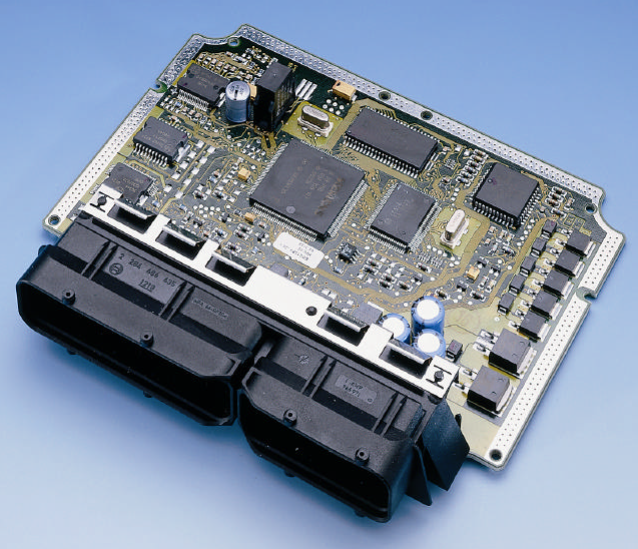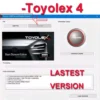How Engine ECU Works: A Comprehensive Guide 4
Modern cars are sophisticated pieces of machinery that rely on a wide range of technologies to operate efficiently. One of the most important components of a car’s engine is the Engine ECU (Electronic Control Unit). In this blog post, we will provide a comprehensive guide on how Engine ECU works, its components, and its functions. We will also discuss the different types of Engine ECU, common problems that can arise, and the future of Engine ECU technology.
What is Engine ECU?
Engine ECU (or ECM, PCM…) is a computerized system that manages the operation of an engine. It is essentially the brain of the car’s engine, responsible for monitoring and controlling various functions, including fuel injection, ignition, and emission control. The Engine ECU receives input from various sensors in the car and processes that information to adjust the engine’s performance. The Engine ECU consists of several components, including the microprocessor, memory, input/output interface, and power supply. Today we have a large number of different ECU’s brands and manufacturers like Bosch, Siemens, Denso, Magneti Marelli… And every engine being petrol, diesel, EV or hybrid have one or more engine control units.


How Engine ECU Works
The Engine ECU receives input from various sensors in the car, including the oxygen sensor, throttle position sensor, engine temperature sensor, and many others. It uses this information to determine the engine’s performance and make adjustments accordingly. For example, if the oxygen sensor detects that the air/fuel mixture is too rich, the Engine ECU will adjust the fuel injection to reduce the amount of fuel being delivered to the engine.
The Engine ECU communicates with the engine through actuators, which are devices that convert electrical signals into mechanical action. These actuators include the fuel injectors, ignition coils, and the idle air control valve. The Engine ECU sends electrical signals to these actuators to adjust their operation, which in turn adjusts the engine’s performance.
The Engine ECU uses complex algorithms to determine the best engine performance settings based on the information it receives from the sensors. These algorithms take into account factors such as engine load, engine speed, and throttle position to determine the optimal fuel injection timing, ignition timing, and other parameters. By constantly monitoring and adjusting these parameters, the Engine ECU can optimize engine performance, improve fuel economy, and reduce emissions.
ECU Software
ECU achieves optimizing engine running by using software, or “maps,” that are programmed to adjust engine performance based on real-time sensor data.
What are ECU Maps?
ECU maps are essentially software algorithms that are programmed into the Engine Control Unit to control the engine’s performance. These maps are created by car manufacturers and are specific to each car model and engine type. They are designed to adjust engine parameters such as fuel delivery, ignition timing, and turbocharger boost pressure to optimize engine performance for a variety of driving conditions.
How do ECU Maps Work?
ECU maps work by taking real-time data from various sensors in the engine and using it to adjust engine parameters. For example, if the ECU detects that the engine is operating under heavy load, it will adjust the fuel delivery and ignition timing to provide more power. Similarly, if the engine is operating under light load, the ECU will adjust the fuel delivery and ignition timing to improve fuel economy.
ECU maps are typically stored in the Engine Control Unit’s memory and are accessed through a diagnostic port. Tuning companies and enthusiasts can modify these maps to adjust engine performance to suit their specific needs. It is so called “chiptuning” or remao. For example, a performance enthusiast might modify the ECU map to increase the engine’s power output, while a fuel economy enthusiast might modify the map to improve fuel efficiency. If you are interested in learning how to remap ECU by yourself you can read our blog about remaping with popular tool called KESS on this link – Optimizing Engine Performance With KESS, also you can checkout other best quality tool for remap called PCM TUNER.
The Importance of ECU Maps in Optimizing Engine Performance
ECU maps play a crucial role in optimizing engine performance. They are responsible for adjusting engine parameters based on real-time data to provide the best possible performance and fuel efficiency. Without ECU maps, engines would be unable to adjust to changing driving conditions and would not be able to operate efficiently.
In addition to optimizing engine performance, ECU maps also play a role in emissions control. They adjust engine parameters to reduce the amount of harmful pollutants that are released into the environment, helping to ensure that cars comply with emissions regulations.
Different Types of Engine ECU
There are several different types of Engine ECU, including OBD1, OBD2, and others. OBD1 was the first standardized Engine ECU system, introduced in the early 1980s. It was used primarily in American cars and had limited capabilities compared to modern systems. OBD2, which stands for On-Board Diagnostics, is a newer and more advanced Engine ECU system that was introduced in the mid-1990s. It is now the standard for most cars sold in the United States and Europe. Other types of Engine ECU include CAN (Controller Area Network) and FlexRay.
One of the main differences between the different types of Engine ECU is the amount of information they can provide about the engine’s performance. OBD1, for example, only provides basic diagnostic information, while OBD2 provides much more detailed information, including real-time engine performance data.
There are many different Engine ECU brands and types available on the market, and the type of ECU used in a particular car can depend on a variety of factors such as the car manufacturer, the engine type, and the model year. Some of the most common Engine ECU brands and types include:
- Bosch: Bosch is a leading manufacturer of Engine ECUs and is used by many car manufacturers around the world. Their ECUs are known for their reliability, performance, and versatility.
- Delphi: Delphi is another popular Engine ECU brand that is used in many different car models. Their ECUs are known for their advanced features and ability to communicate with other systems in the car.
- Denso: Denso is a Japanese manufacturer of Engine ECUs and is used by many Asian car manufacturers. Their ECUs are known for their high level of accuracy and responsiveness.
- Siemens: Siemens is a German manufacturer of Engine ECUs and is used by many European car manufacturers. Their ECUs are known for their advanced features and ability to optimize engine performance for fuel efficiency.
- Magneti Marelli: Magneti Marelli is an Italian manufacturer of Engine ECUs and is used by many different car manufacturers around the world. Their ECUs are known for their advanced features and high level of performance.
- AEM: AEM is an American manufacturer of Engine ECUs that specializes in high-performance applications such as racing and tuning. Their ECUs are known for their advanced features and ability to customize engine performance.
- Haltech: Haltech is an Australian manufacturer of Engine ECUs that specializes in high-performance applications. Their ECUs are known for their advanced features and ability to optimize engine performance for racing and tuning.
These are just a few examples of the most common Engine ECU brands and types. Each manufacturer has its own unique features and capabilities, so it is important to research and choose the ECU that best fits your specific needs and requirements.
Common Problems with Engine ECU
Like any other component of a car’s engine, the Engine ECU can develop problems over time. Some of the most common issues that can arise with Engine ECU include:
- Faulty Sensors: If one of the sensors in the car’s engine is faulty or damaged, it can provide inaccurate information to the Engine ECU, which can lead to performance issues.
- Electrical Problems: Electrical issues, such as damaged wiring or faulty connectors, can also cause problems with the Engine ECU
- Software Malfunctions: The Engine ECU relies on complex software algorithms to operate, and if there is a glitch in the software, it can cause the ECU to malfunction. This can lead to a range of problems, including poor fuel economy, rough idling, and reduced engine performance.
- Power Supply Issues: The Engine ECU requires a stable power supply to operate correctly. If there is an issue with the power supply, such as a weak battery or a faulty alternator, it can cause the ECU to malfunction.
- Physical Damage: Physical damage to the Engine ECU, such as from water damage or a collision, can cause it to malfunction.
If you experience any of these problems, it’s important to take your car to a qualified mechanic for diagnosis and repair. Attempting to fix Engine ECU problems yourself can be dangerous and may cause further damage to the car.
The Future of Engine ECU Technology
As with all technologies, the Engine ECU is constantly evolving. Advances in computer processing power and sensor technology are allowing Engine ECUs to become more sophisticated and powerful. For example, some modern Engine ECUs are now equipped with machine learning algorithms that can adapt to changes in driving style and environment to optimize engine performance.
Another area of innovation in Engine ECU technology is the integration of connected car technology. Some modern Engine ECUs can communicate with other components of the car, such as the infotainment system, to provide real-time performance data and diagnostics. This can allow drivers to monitor their car’s performance and diagnose problems remotely.
So as final words, the Engine ECU is an essential component of a car’s engine, responsible for managing and controlling various functions, including fuel injection, ignition, and emission control. It receives input from various sensors in the car and processes that information to adjust the engine’s performance. There are several different types of Engine ECU, each with different capabilities, and common problems can arise with the ECU. Understanding how the Engine ECU works and common problems that can arise is essential for maintaining your car’s performance and ensuring it operates efficiently for years to come.






I had a problem with my 2010 Suzuki Vitara, it was running on 2 cylinders only and we changed everything possible and at the end it was ecu problem which needed to be changed and coded to my car
Hey there i am mechanic,great job on this ecu blog post. You did a fantastic job of breaking down all the complicated jargon and technical terms into easy-to-understand language that even someone who’s not a car expert can grasp. I love how you explained that the engine ECU is basically the “brain” of your car’s engine, controlling everything from fuel injection to ignition timing. Your use of relatable examples, like how it can affect your car’s performance, really helped to bring the topic to life.
Your writing style is approachable and engaging, and I think anyone who’s curious about how their car works will find your post super helpful. Keep it up!
So easy to read and understandable to layman. Thanks!
Wow, really good guide and most importantly easy to read for beginners and non car guys like me :-D. Good work!